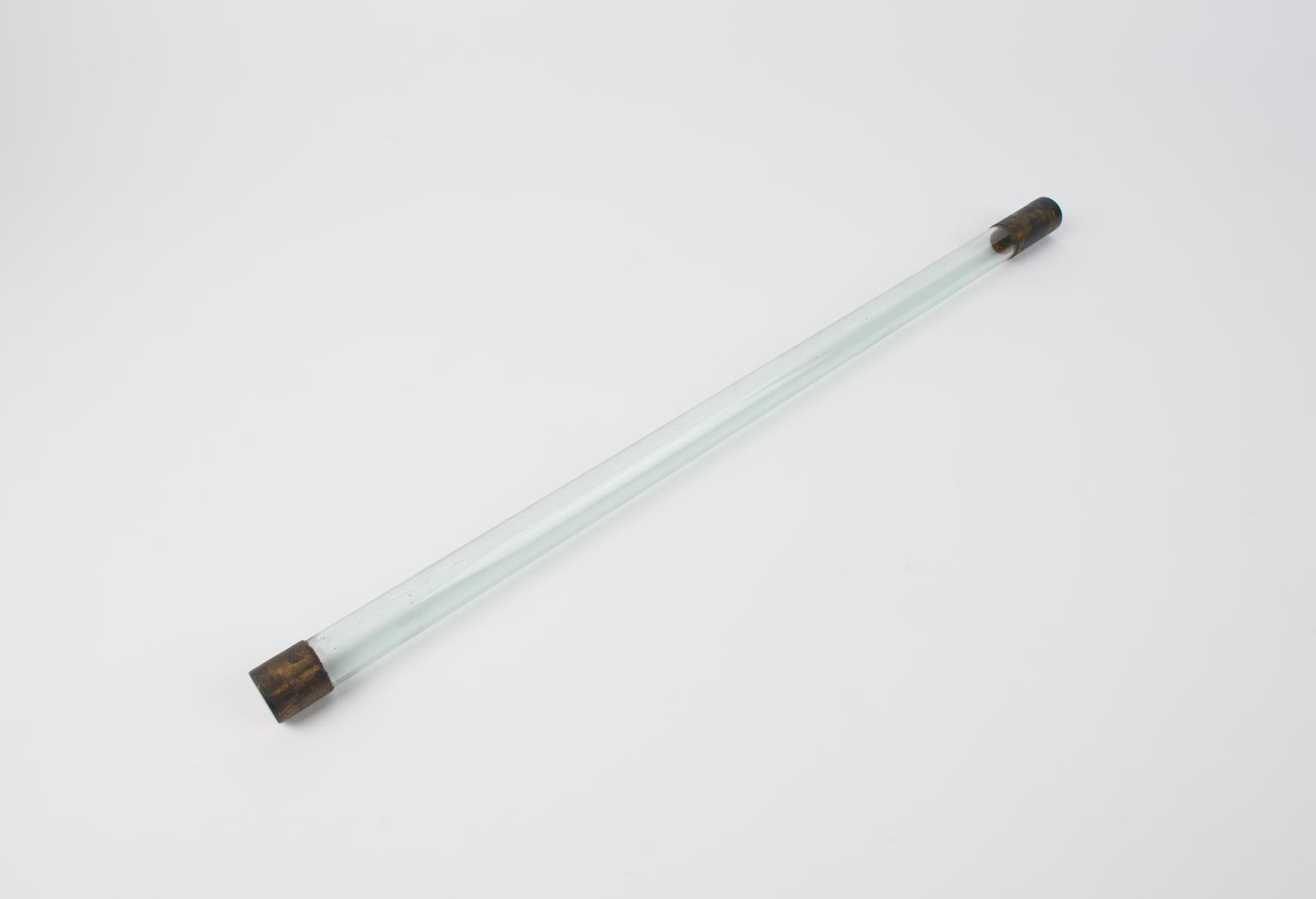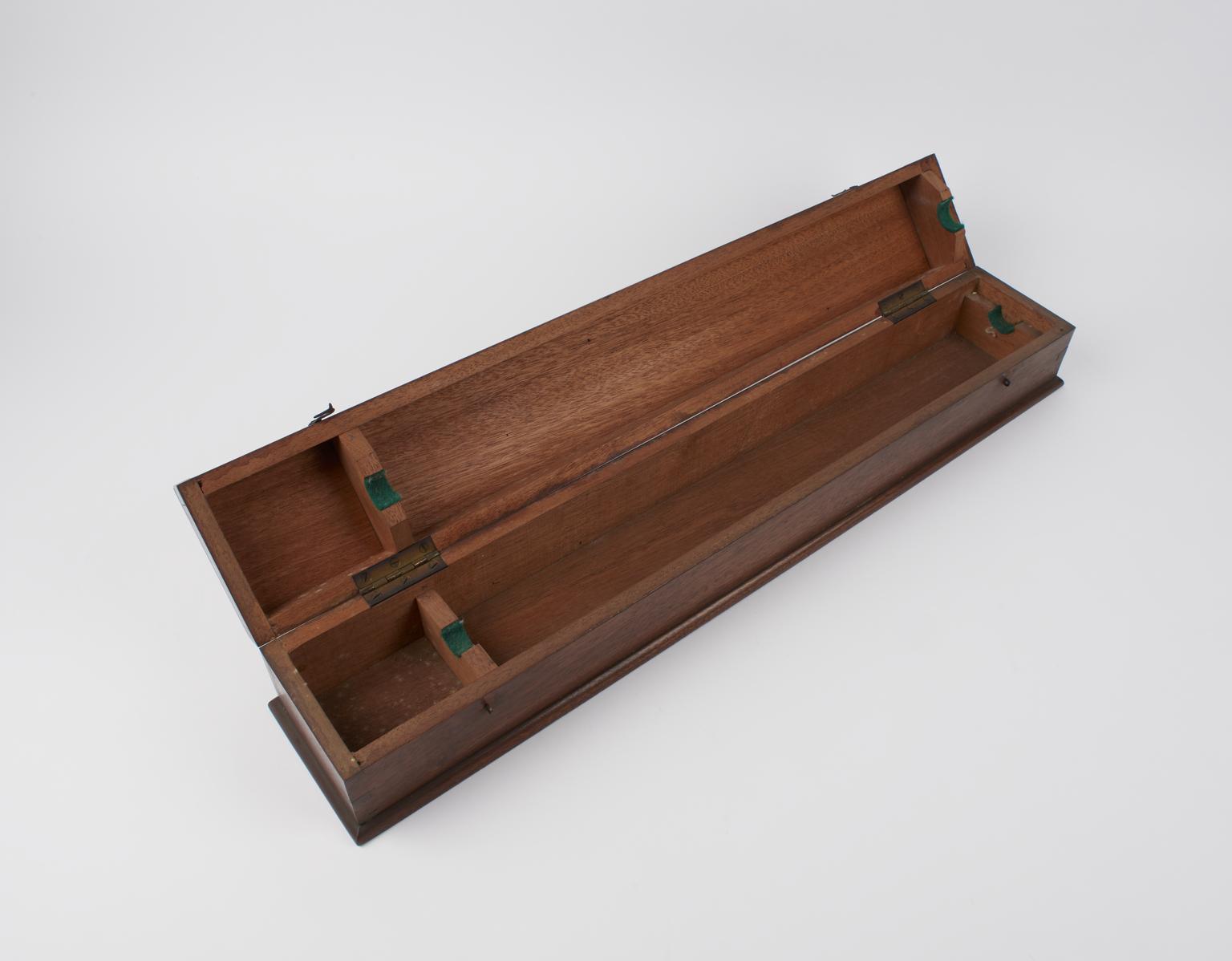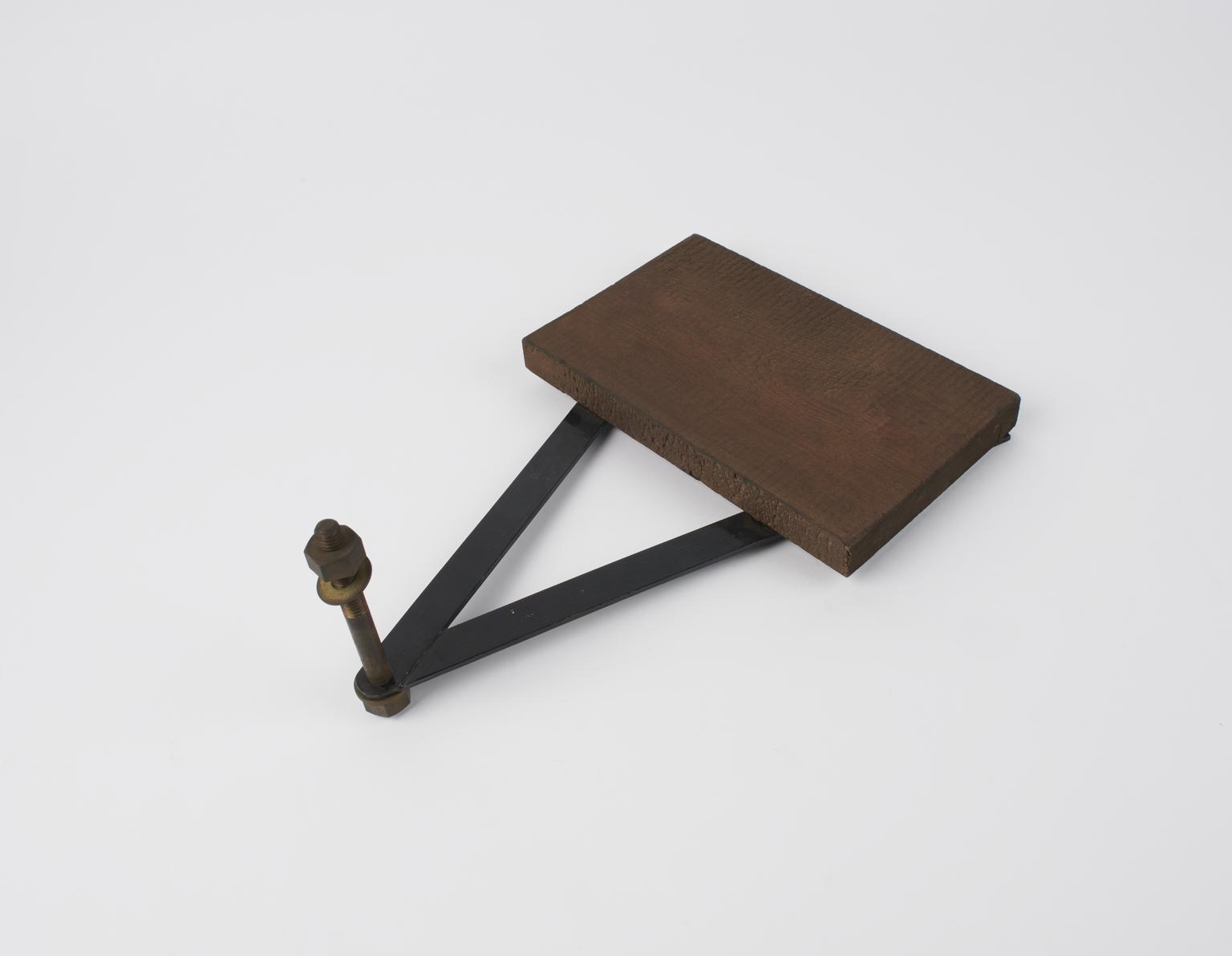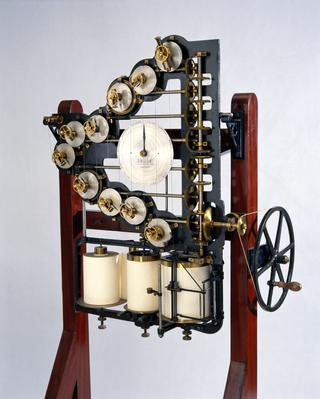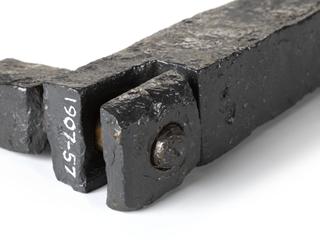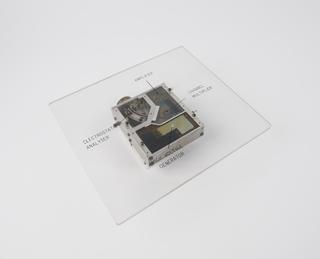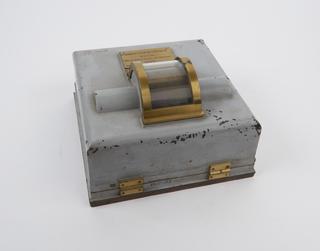Threlfall quartz-thread gravity balance for exploration geophysics, made by Richard Threlfall and James Pollock, Australia, 1889 - 1899, later tested and modified at the National Physical Laboratory, Teddington, London, UK, 1923.
This gravity balance was developed by Richard Threlfall and James Pollock in Australia during the years 1889 - 1899. It is in effect a sensitive spring balance in which a small gilded brass lever is the attracted mass which twists a quartz thread. As the accuracy of observation depends on removing from the balance effects due to humidity and temperature changes, the apparatus is housed within an airtight casing which contains dry air at less than atmospheric pressure. A platinum wire resistance thermometer wound on glass measures the temperature of the whole length of the cylinder with its contained torsion thread, so that due compensation can be made. In use the instrument is levelled; the image of the lever is sighted against the telescope crosswire, and a temperature reading taken. The instrument will measure changes in the value of g to one part in 100,000, this being represented on the sextant vernier by 1.060 minutes of arc.
It was designed for exploration geophysics; to detect variations in gravitational field in order to map geographical features and identify oil or mineral deposits. The gravity balance is constructed based on the static principle rather than using dynamic methods such as a pendulum. This same principle is still in use in some types of contemporary gravity meters.
The balance was used between 1894 and 1899 to make a series of observations in eastern Australia and Tasmania. It was also brought to England in 1923 for additional tests and experiments at the National Physical Laboratory. It was repaired and slightly modified to get it into working order.
